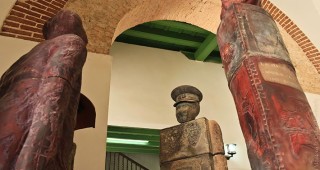Cuba’s first theme park opened in 2008 on the site of Havana’s former Coney Island Park. The very old park was razed to the ground to give way to the new attractions. There are rides for kids of all ages as well as for adults.
Isla del Coco – a theme park in Havana
By LOU
There are several places in Havana where children can have safe and healthy fun. One of these is Isla del Coco, or Coco Island Park, also known as Coney Island, for its previous name.
It reopened in 2008 as a medium-size theme park after a total renovation of its facilities and the modernization of the rides. The park, however, is not geared only at children but the public of all ages. There are rides for the entire family: the roller coaster, twister, swinging ship, te flying elephants, carrousel, Ferris wheel, bump cars, and many others.
The park’s current name, Isla del Coco, is based on a famous Cuban children’s story of the same name. Captain Plin, the leader of the island, and his friends, who were all born out of coconuts, welcome kids and adults to the amusement park.
The park has many other attractions besides the thrill rides. One that attracts kids like flies to honey is the Pillow Fight. Rolling on the cushioned floor of the chamber, the kids never get tired and the battle can go on for hours.
The swinging ship is another popular ride with kids as well as adults who are not keen to have their stomachs turned. From side to side the ship goes placidly. There’s no fear here of anything too intense. The wilder at heart prefer the roller coaster or the cosmonaut, their adrenaline running high from the excitement.
Isla del Coco is very well located just a few meters away from both the beach and the circus. So here you have the chance of killing more than two birds with one stone…if you’re still up to it after a whole afternoon in the park.









 Modern
Modern








